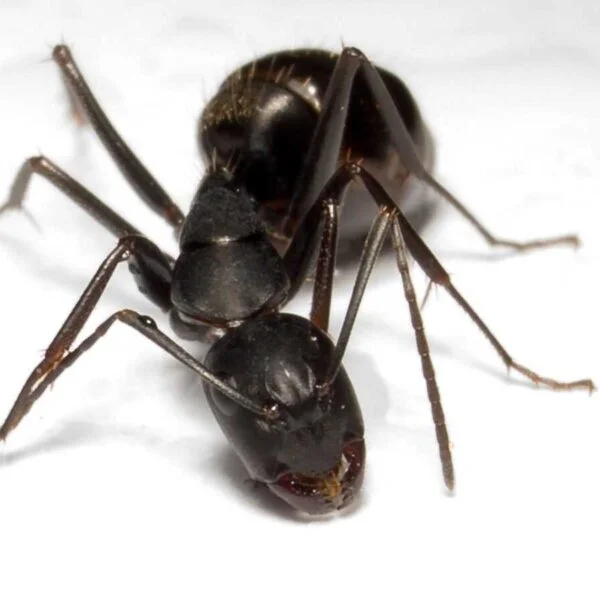Camponotus lateralis: A Species of Fascinating Ants
Camponotus lateralis is a species of ants known for their monogynous colony type and medium development rate. With colonies ranging from 1000 to 5000 workers, they are an interesting species to observe and care for.
Size
- Queen: 7-9 mm
- Workers: 4-5 mm
- Majors: 6-7 mm
When it comes to appearance, Camponotus lateralis ants have a distinct coloration. Their belly and chest are glossy black, while their head is either black or dark burgundy. The head itself has a dark brown color with a black forehead, making them easily recognizable.
Nutrition for Camponotus lateralis
The nutrition of Camponotus lateralis primarily consists of a varied diet. These ants primarily feed on food insects such as cockroaches and crickets. Additionally, they also consume syrup made from a mixture of water and honey, with a ratio of 4:1. They can also be fed with fruits, vegetables, jelly, and cooked chicken without salt, offering a diverse range of suitable food sources for this species.
Humidity and Temperature Requirements
Creating the ideal environment for Camponotus lateralis ants involves maintaining the right humidity and temperature levels. These ants thrive in a humidity range of 30% to 50% in the arena and 50% to 60% in their nest. Temperature-wise, they prefer a range of 18°C to 28°C in the arena and 21°C to 24°C in their nesting area.
Species Features and Nest Recommendations
Camponotus lateralis ants have a structure, shape, and coloration that may sometimes be confused with the species Crematogaster scutellaris. Therefore, it is important to pay attention to their distinctive characteristics to correctly identify them.
When it comes to choosing nests for breeding Camponotus lateralis colonies, several options are recommended. Acrylic, cork, plaster, and aerated concrete nests are suitable for providing a conducive environment for their growth and development.
Overall, Camponotus lateralis ants are fascinating creatures with unique characteristics. By providing them with suitable nutrition, maintaining proper humidity and temperature levels, and selecting appropriate nest options, you can create an ideal habitat for these ants to thrive and observe their impressive colony dynamics.
If you’re interested in learning more about ants or expanding your collection, visit our Ants category for a wide selection of ant species and supplies.


















Reviews
There are no reviews yet.